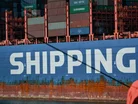How Supply Chain Finance Mitigates Geopolitical Risks

HSBC, in collaboration with Procurement Leaders, a World50 Group Community, has published Building Resilient Supply Chains Amid an Uncertain Geopolitical Landscape.
The report highlights that global supply chains grow more complex and geopolitical uncertainty increasingly affects global trade, altering trade flows, supply chain finance emerges as a crucial tool to mitigate these risks.
Modern supply chains and their vulnerabilities
Although supply chain disruptions are not new, modern products now depend on numerous components sourced globally, making unexpected events more damaging.
Trade experts recommend that companies rethink their sourcing strategies, aiming to build transparent, simpler supply chains. These should be resilient to geopolitical risks, sourced from markets closer to home and not reliant on a single supplier for goods and materials.
Supply chain finance is another crucial tool. According to Marissa Adams, Americas Head of Global Trade Solutions at HSBC, this finance allows organisations to hold more inventory cost-neutrally and balance-sheet friendly. Injecting liquidity into trading relationships can add resilience and safety buffers.
Four-stage risk assessment and remediation process
“An intelligently designed supply chain finance programme can do a lot of heavy lifting in terms of de-risking trading relationships, improving supplier resilience and providing suppliers with the finance to invest in and develop their businesses,” says Marissa.
She suggests companies follow a four-stage risk assessment and remediation process to plan for uncertainty:
- Take a risk-based approach to sourcing analysis: Focus on areas where the organisation is most at risk or where the biggest dangers lie. Often, these areas are associated with specific regions or countries
- Analyse the consequences of supply disruption: Estimating the likelihood of disruption is difficult, but exploring the likely consequences is not. Identify which products or product groups would be impacted, how quickly, for how long, if substitutes are available and the financial consequences
- Review options to avoid disruption: Identify other suppliers, their locations and whether they offer the same product like-for-like. Assess their viability in terms of scale, technology maturity, time-to-market and quality. Determine if you need one, two, or more alternative suppliers
- Repeat as necessary to address new risks: Geopolitical uncertainties arise over time. Your product offerings and supply base evolve. Repeat the risk assessment exercise as new threats and vulnerabilities emerge.
HSBC's new direction in trade solutions
This trade report follows the launch of HSBC Global Trade Solutions, a new identity for the bank’s long-standing Global Trade and Receivables Finance (GTRF) business. Global Trade Solutions builds on HSBC’s foundations as a trade bank, creating new ways to connect the world through trade.
The focus is on supporting businesses for the future, helping them navigate the evolving landscape of global trade by leveraging HSBC’s network, expertise and solutions.
******
Check out the latest edition of Supply Chain Magazine and sign up to our global conference series – Procurement and SupplyChain LIVE 2024.
******
Supply Chain Digital is a BizClik brand.

